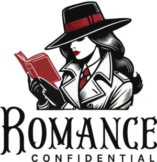After being away from the book community and blogging world for so long, it was a pleasant surprise to discover new ways to track my reading habits! It’s 2024, so I shouldn’t have been so shocked, but nonetheless, there are countless options out there, each with a different approach.
Now, I’m a ride-or-die Goodreads kind of gal. I’ve been using it for years, mainly because of the seamless syncing between my Kindle and Goodreads. But I have to admit, I love the statistics that some of the newer platforms, like Fable and StoryGraph, offer. Let’s dive in and explore what each of these programs brings to the table!
Goodreads
Let’s kick off with the most established platform around, Goodreads. It’s been around for a long time, and for basic book tracking and community features, it’s a solid choice! I’ve been using Goodreads for years, and the automatic sync with my Kindle is a huge win—no more manual tracking. This is perfect for me since I tend to forget to update my reading progress, so maintaining a streak is nearly impossible.
However, despite its large community and Kindle integration, Goodreads has its downsides. The platform hasn’t seen significant updates in a long time, which is disappointing for tech lovers like me. I’d love to see some modern features added, especially after testing other platforms.

Pros:
- Large community
- Amazon integration
- Most widely known platform
Cons:
- Outdated interface
- Limited data insights
StoryGraph
Next up is StoryGraph, a relatively new contender that brings some cool features, especially from a data perspective! It doesn’t sync automatically like Goodreads, but you can do a one-time Goodreads import to establish your library. StoryGraph’s biggest strength is its recommendation engine, which uses mood, previous reads, and AI to suggest new books. If you’re diligent about tracking your reads and want strong, personalized recommendations, StoryGraph is definitely worth considering.

Pros:
- Comprehensive recommendations
- Robust statistics and analytics
- Community feature with challenges (by books, pages, or hours)
Cons:
- Smaller user base
- New platform with a learning curve
- Requires manual tracking of books
Fable
Fable is actually a close second to Goodreads for me. It’s a fun platform that offers just enough statistics to feel insightful while providing a social experience. Its social aspect is similar to Goodreads’ feed but feels more like Threads or Twitter, which I personally enjoy. I also love the stats Fable can generate from your reading history, especially with the ability to import Goodreads data more than once. This feature is a lifesaver for those of us who aren’t great at tracking every book as we read it. The ability to do multiple imports helps me fill in the gaps and get a more accurate readout of my stats. If Fable had flawless syncing with Kindle, I’d probably make the switch completely!

Pros:
- Fun, interactive social content
- Curated book recommendations and content
- Book clubs and community-driven reading
- TV show tracking and additional entertainment features
- Good statistics with the option for multiple Goodreads imports
Cons:
- Manual tracking of books and shows
- Statistics aren’t as detailed as StoryGraph
Notion
Notion is my go-to productivity platform, and I use it for everything from planning my blog content to managing day-to-day tasks. So, it’s no surprise it makes an honorable mention for tracking reading habits. With tons of downloadable templates, Notion can be fully customized to track your reading progress. While I don’t use it specifically for books, I do use it to track K-Dramas I’ve watched! If you’re already using Notion, it can be a handy addition to your reading tracking routine.

Pros:
- Full customization of reading trackers
- Integrates with other life/work tasks
- Great for visualizing reading goals and stats
Cons:
- Requires setup and customization
- No built-in community or social features
- Not a dedicated book app
Conclusion: Which One is Right for You?
While there are countless programs out there, these are the ones I’ve enjoyed testing out the most. Goodreads wins for its seamless syncing, Fable shines with its fun social community, and StoryGraph offers data lovers a treasure trove of insights (with Notion earning an honorable mention). Each platform has its strengths, and while there’s some overlap, my top picks are Goodreads and Fable. The fact that I can continue using Goodreads while importing data to Fable for better stats is a game-changer.
I’m excited to give StoryGraph a more dedicated try in 2025 to see how it performs over time and how the platform evolves. I do love the mood-based recommendations and detailed statistics it offers.
At the end of the day, there’s no right or wrong way to track your reading habits! It all comes down to personal preference and what features make you happy. As for me, I’ll be sticking with my tried-and-true Goodreads while layering in Fable for the extra insights.
I hope this article gives you some insight into the different options available for tracking your reads. Maybe you learned something new! Do you use a different platform to track your reading habits? I’d love to hear about it!


